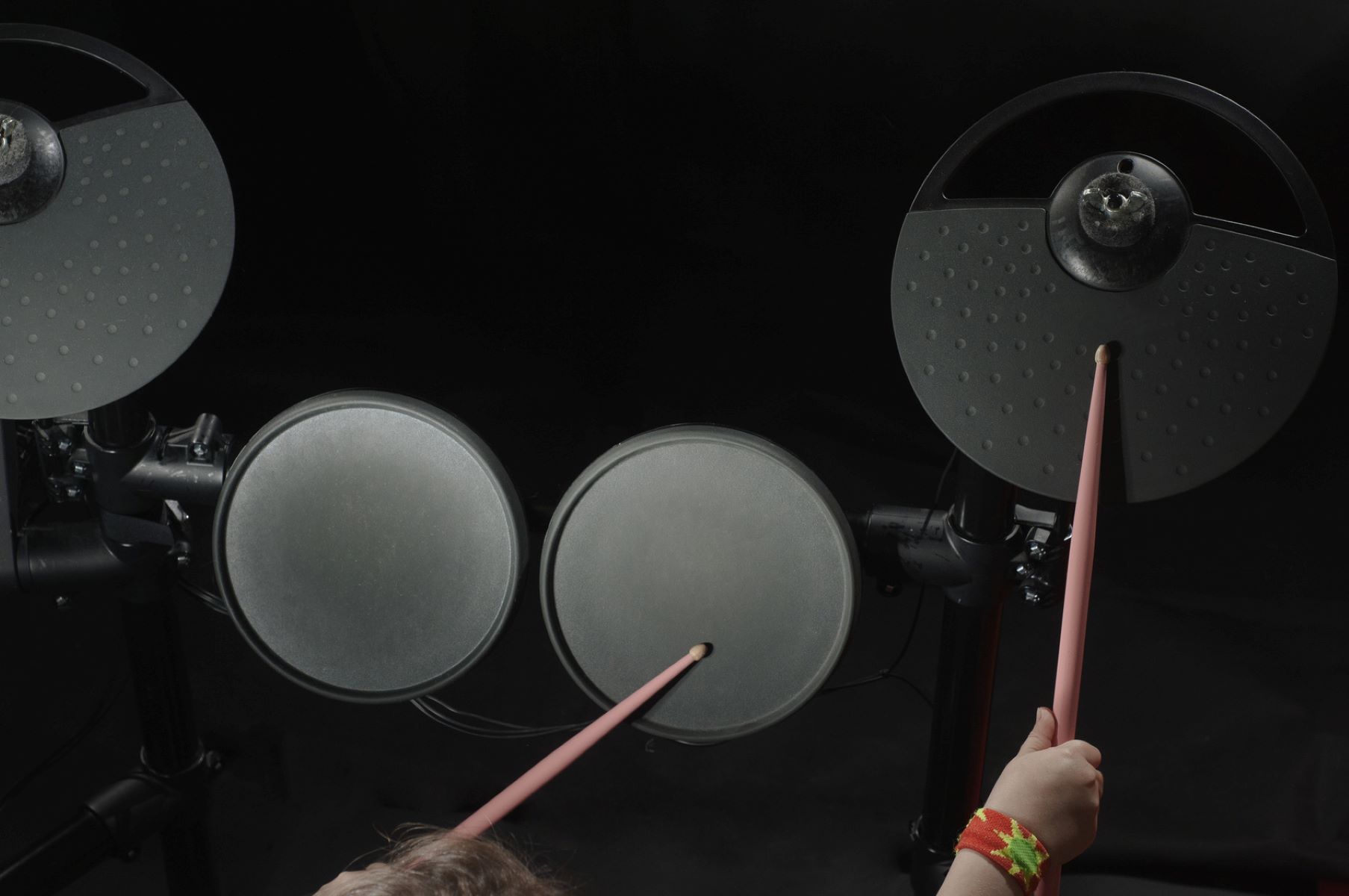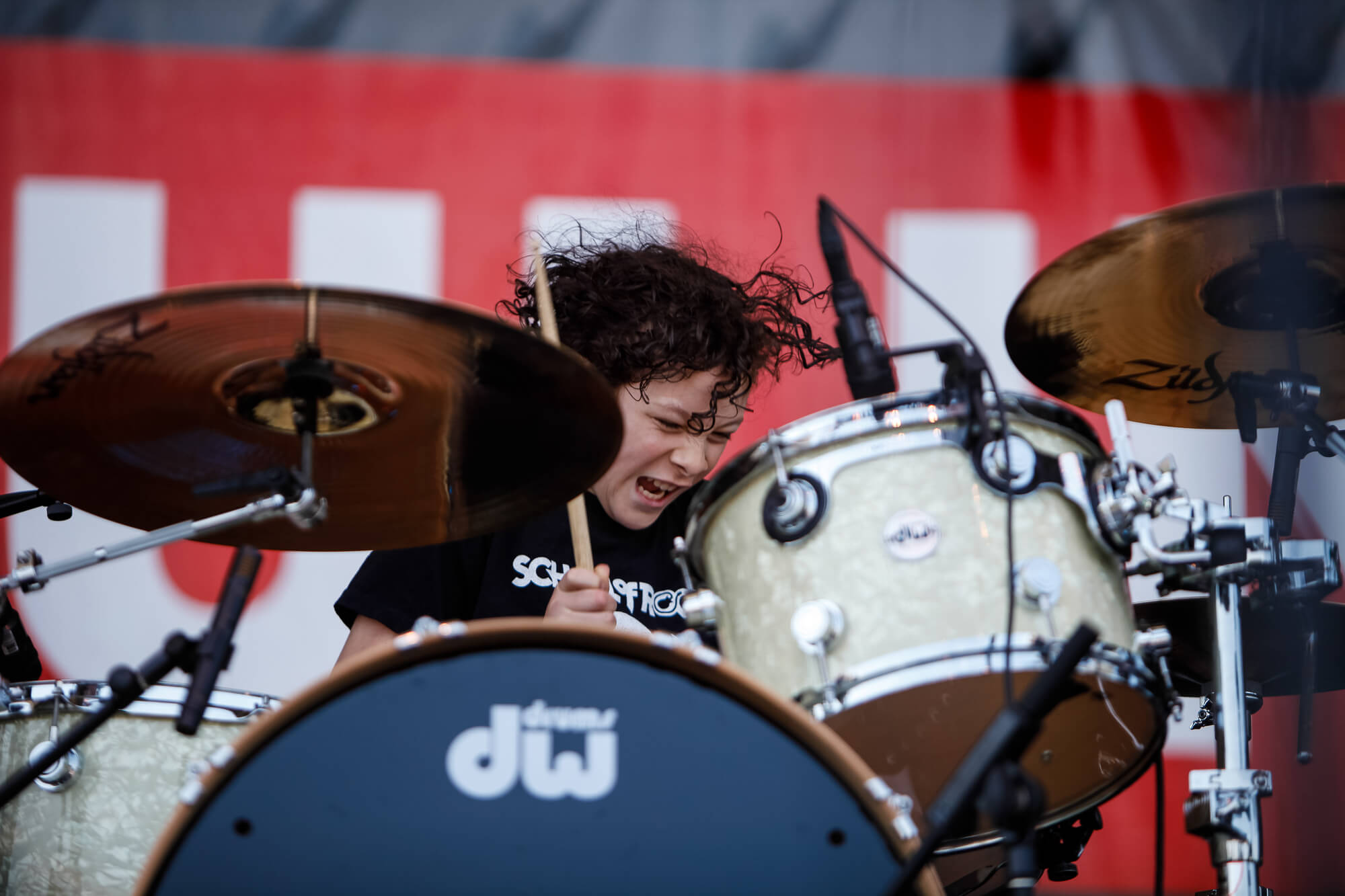Home>Instruments>Drums>How Many Calories Does Playing The Drums Burn


Drums
How Many Calories Does Playing The Drums Burn
Published: February 7, 2024
Discover the calorie-burning benefits of playing the drums and how it can contribute to your fitness routine. Learn how drumming can help you stay active and healthy.
(Many of the links in this article redirect to a specific reviewed product. Your purchase of these products through affiliate links helps to generate commission for AudioLover.com, at no extra cost. Learn more)
Table of Contents
Introduction
The Physical Demands of Drumming
Playing the drums is not only an exhilarating and rhythmic experience but also a physically demanding activity that can significantly contribute to calorie burning. The intricate coordination of hand and foot movements, along with the dynamic engagement of core muscles, makes drumming a full-body workout. In this article, we will explore the caloric expenditure associated with playing the drums, shedding light on the factors that influence the number of calories burned during a drumming session.
The physical demands of drumming extend beyond arm and leg movements. Drummers often maintain a high level of energy and endurance throughout performances, requiring cardiovascular fitness and stamina. The continuous motion of arms and legs, combined with the need for precise timing and coordination, results in a substantial energy output. As such, understanding the caloric expenditure of drumming is not only insightful for drummers but also for fitness enthusiasts seeking alternative ways to stay active and burn calories.
Throughout this article, we will delve into the various factors that impact the number of calories burned while drumming, providing a comprehensive overview of the physiological and metabolic aspects of this rhythmic art form. Whether you're a seasoned drummer looking to quantify the physical benefits of your passion or someone intrigued by the fitness potential of drumming, this exploration will offer valuable insights into the caloric expenditure associated with this dynamic musical pursuit. So, let's dive into the world of drumming and uncover the fascinating relationship between rhythmic expression and calorie burning.
The Physical Demands of Drumming
Drumming is a highly physical activity that engages multiple muscle groups and energy systems, making it a form of exercise with the potential to burn a significant number of calories. The rhythmic coordination of hand and foot movements, coupled with the sustained endurance required during performances, places substantial demands on the body.
When a drummer plays, they engage a variety of muscle groups, including the arms, shoulders, core, and legs. The repetitive striking of the drumheads and cymbals involves the use of the upper body, particularly the deltoids, triceps, and biceps. Additionally, the continuous footwork on the bass drum pedal activates the leg muscles, particularly the quadriceps and calf muscles. This comprehensive engagement of both upper and lower body muscles results in a holistic workout that can contribute to caloric expenditure.
Furthermore, drumming involves dynamic movements that require coordination and agility. The rapid and precise coordination of limb movements, coupled with the need for timing and rhythm, demands a high level of concentration and neuromuscular control. As a result, drummers often experience an increased heart rate and elevated breathing during intense playing sessions, indicating the cardiovascular demands of the activity.
Moreover, the physical demands of drumming extend beyond individual practice sessions to encompass live performances. Drummers often sustain high levels of energy and endurance throughout performances, maintaining consistent motion and rhythm for extended periods. This sustained physical effort contributes to the overall caloric expenditure associated with drumming, highlighting its potential as a form of aerobic exercise.
Understanding the physical demands of drumming is essential for appreciating its fitness benefits. Whether engaging in drumming as a recreational activity or pursuing it professionally, recognizing the comprehensive muscular and cardiovascular engagement involved can provide valuable insights into the potential fitness outcomes of this rhythmic pursuit.
Factors Affecting Caloric Expenditure
Several factors influence the caloric expenditure associated with drumming, shaping the overall energy output during a drumming session. Understanding these factors is crucial for estimating the number of calories burned and comprehending the varying metabolic demands of drumming.
Firstly, the intensity and duration of drumming significantly impact caloric expenditure. Intense and prolonged drumming sessions require sustained muscular effort and energy expenditure, resulting in higher overall calorie burning. The tempo, complexity, and speed of the music being played can also influence the energy demands placed on the drummer, affecting the rate of caloric expenditure.
Secondly, individual body weight and composition play a role in determining the number of calories burned while drumming. Heavier individuals typically burn more calories during physical activities due to their higher basal metabolic rate and increased energy requirements. Additionally, muscle mass and fitness levels can influence caloric expenditure, as individuals with greater muscle mass often have higher metabolic rates and energy demands.
Furthermore, the physical exertion and energy output during drumming are influenced by the drummer’s technique and playing style. Drummers who incorporate dynamic movements, such as intricate fills, rapid drum rolls, and complex rhythmic patterns, may experience heightened energy expenditure compared to those employing more subdued playing styles. The use of different drumming accessories, such as heavier drumsticks or larger drums, can also impact the physical demands and, consequently, the caloric expenditure of drumming.
Environmental factors, such as ambient temperature and humidity, can affect the metabolic demands of drumming. Playing in warmer conditions may lead to increased perspiration and fluid loss, potentially influencing the overall energy expenditure and hydration requirements of the drummer. Additionally, the physical space available for drumming and the ergonomic setup of the drum kit can impact the efficiency and energy demands of the playing experience.
By considering these factors, drummers and fitness enthusiasts alike can gain insights into the multifaceted nature of caloric expenditure during drumming, allowing for a more comprehensive understanding of the metabolic and physiological dynamics at play during this rhythmic pursuit.
Calculating Calories Burned While Drumming
Estimating the number of calories burned during a drumming session involves considering various factors that contribute to the overall energy expenditure. While precise calculations may be challenging due to the individualized nature of caloric expenditure, several methods can provide valuable insights into the approximate calories burned while drumming.
One approach to estimating caloric expenditure during drumming is to utilize metabolic equivalents (METs), which quantify the energy cost of physical activities. Research indicates that drumming falls within the range of 3.0 to 6.0 METs, depending on the intensity and duration of the session. By referencing MET tables and guidelines, drummers can approximate the calories burned per minute based on the corresponding MET value for their drumming intensity.
Another method involves using heart rate monitoring and wearable fitness devices to track the physiological response to drumming. By monitoring heart rate patterns during practice or performance, drummers can gauge the intensity of their exertion and extrapolate the caloric expenditure based on heart rate data. This approach provides real-time feedback on the cardiovascular demands of drumming and offers insights into the energy expenditure associated with different playing styles and tempos.
Furthermore, advancements in wearable technology and fitness trackers have enabled drummers to leverage activity monitoring features to estimate calories burned during drumming. These devices utilize accelerometers and motion sensors to detect movement patterns and quantify energy expenditure, providing drummers with personalized data on their caloric burn during practice and performances.
It is important to note that individual variations in metabolic rates, body composition, and playing styles can impact the accuracy of calorie calculations. As such, these methods serve as estimations and benchmarks for understanding the relative energy demands of drumming rather than precise measures of caloric expenditure.
By combining insights from METs, heart rate monitoring, and wearable technology, drummers can gain a nuanced understanding of the caloric expenditure associated with their rhythmic pursuits, empowering them to optimize their practice routines and appreciate the fitness benefits of drumming from a metabolic perspective.
Conclusion
Drumming represents a unique intersection of musical expression and physical exertion, offering a compelling blend of artistic creativity and fitness potential. The physical demands of drumming encompass a comprehensive engagement of upper and lower body muscles, coupled with cardiovascular endurance and neuromuscular coordination. As a result, drumming emerges as a dynamic form of exercise with the capacity to contribute to caloric expenditure and overall physical fitness.
Throughout this exploration, we have delved into the multifaceted factors that influence the number of calories burned while drumming, shedding light on the intricacies of caloric expenditure within this rhythmic pursuit. From the intensity and duration of drumming sessions to individual body composition and playing styles, a myriad of variables shape the metabolic demands of drumming, highlighting its diverse and personalized impact on energy expenditure.
Estimating the calories burned during drumming involves leveraging methodologies such as METs, heart rate monitoring, and wearable fitness technology, providing drummers with valuable insights into their energy output and the cardiovascular demands of their performances. While precise calculations may pose challenges due to individual variations, these approaches offer valuable approximations and benchmarks for understanding the relative caloric expenditure associated with drumming.
Ultimately, the exploration of caloric expenditure in drumming serves to illuminate the holistic nature of this rhythmic art form, offering a fresh perspective on its physical benefits and fitness implications. Whether engaging in drumming as a recreational pursuit or a professional endeavor, recognizing the metabolic and physiological dynamics at play enriches the appreciation of drumming as a form of exercise that transcends conventional fitness modalities.
By embracing the physical demands and caloric expenditure of drumming, enthusiasts and practitioners alike can cultivate a deeper understanding of the interconnectedness between musical expression and physical well-being, fostering a harmonious integration of artistry and fitness within the realm of rhythmic percussion.











